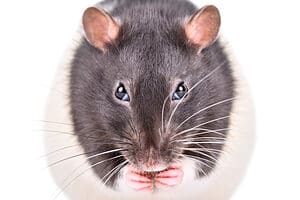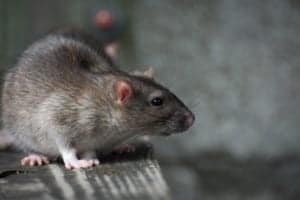Rats are often vilified as dirty and disease-ridden pests, and while this may be true, they are also brilliant animals with fascinating behaviors. Rats are nocturnal animals, but research suggests that their sleep behavior is more nuanced. This realization begs the question – what does this mean for their lifestyles? Read on to learn more about rat sleep behavior.
What are Rats?
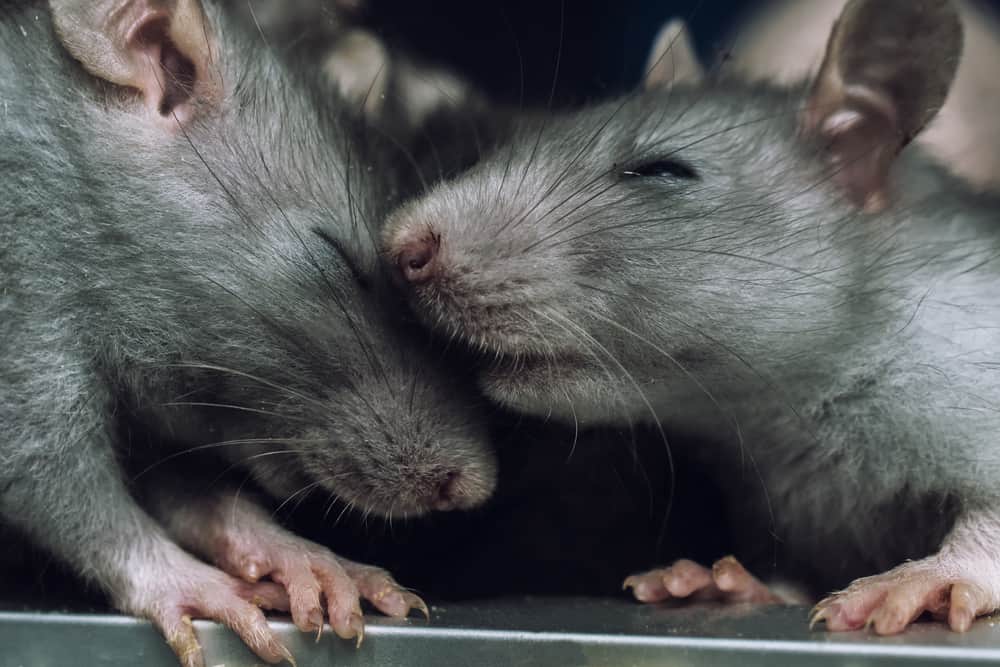
Rats are nocturnal animals that sleep during the day.
©Ukki Studio/Shutterstock.com
Rats are a common type of rodent that can be found all over the world. While rats are often considered pests due to their tendency to spread disease and damage property, they also play a fascinating and vital role in the balance of ecosystems. For instance, many rat species are known to be active predators of smaller mammals, lizards, and insects. They also help pollinate plants by distributing seeds through their natural burrowing and feeding habits.
Furthermore, rats exhibit a wide range of social behaviors and communication skills that allow them to thrive in various environments. Despite their undesirable qualities, rats are integral to many ecosystems and should receive appreciation for their unique characteristics and contributions.
Sleeping Habits of Rats
Rats are well-known for being nocturnal creatures, meaning they tend to be most active and awake at night. Typically, they will wake up from their slumber once the sun starts to go down, eager to begin exploring their surroundings and hunting for food. At this time of day, rats are most playful and energetic, zipping around and engaging in activities like chasing each other, climbing on objects, and exploring new environments.
As dawn approaches, these furry little creatures become sleepy again. They retreat into their hiding places as the sun comes up to rest until dusk comes around again. And so the cycle continues a never-ending pattern of playfulness and sleep punctuated by short periods of waking vigilance. So if you’ve ever wondered what exactly rats get up to when they’re not scampering around your kitchen cupboards after dark, now you know: they’re catching some much-needed shuteye!
Sleep Pattern of Rats
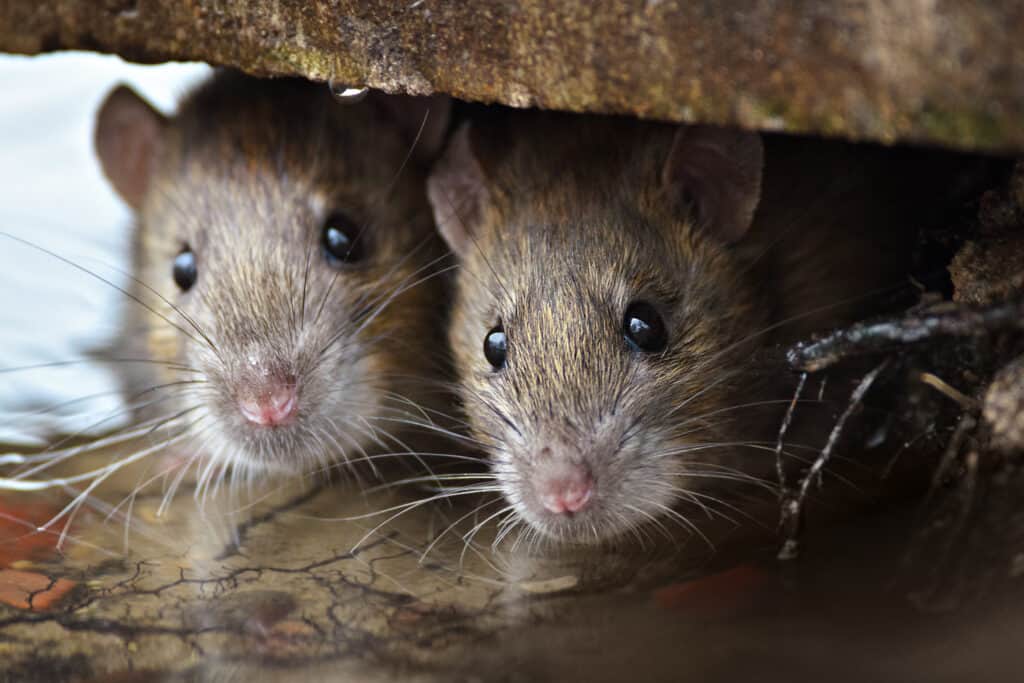
Most rats sleep for 12 hours per day, split into several periods and going through three sleep phases.
©Gallinago_media/Shutterstock.com
Known as polyphasic sleepers, rats typically sleep for about 12 hours each day, broken up into several smaller periods. The first sleep period is relatively light and lasts about one to two hours. After this, a more profound second sleep period follows, usually lasting two to three hours. The final rest period is the deepest, generally lasting four to five hours and including sleep, REM, or rapid eye movement. During this stage of sleep, rats experience all the same cycles humans do, including periods of wakefulness interspersed with SWS (slow-wave sleep) and REMS.
However, a more detailed examination of the rat’s wakeful episodes reveals that these periods are brief compared to the longer asleep episodes. Many awake periods are relatively short and interspersed with longer stints of deeper sleep. Some long wakeful periods occur without any disruption of SWS or REMS states at all. Overall, this fascinating pattern allows rats to get the rest and therapeutic benefits needed to thrive in their environments.
Why are Rats Nocturnal?
There are several reasons why rats may be more active at night. One possible explanation is that they are trying to avoid predators, who would be more likely to see them during the day. Another possibility is that more food sources are available at night since most humans are asleep and unable to disturb their activities. Additionally, the temperature may play a role in determining when rats are most active. Nighttime temperatures are typically milder, which can help nocturnal rats regulate their body temperatures.
Whatever the underlying causes, it is clear that rats tend to be nocturnal creatures, creeping around in the dark and rarely venturing into the light of day. And while this may sometimes make them seem like unwelcome guests, there is no denying that they serve an essential ecological function in balancing out ecosystems by providing food for other animals.
How Does Light Affect Rat Sleep Patterns?
In nocturnal animals like rats, exposure to light at night has several significant effects. Within just minutes, the light causes changes in sleep patterns and decreases food intake. Over the long term, constant exposure to artificial light disrupts normal circadian rhythms, reduces total wake time, and can lead to obesity and type 2 diabetes.
While such conditions are relatively uncommon outside clinical settings, researchers have also found that exposure to dim light at night can produce similar effects in rats. For example, studies on rats by Nelson’s lab showed that dim light at night decreased the amplitude of hormonal rhythms and caused other disruptions to normal circadian behavior. Overall, these studies demonstrate that even low levels of artificial light at night can significantly impact nocturnal rats. The consequences for their health can potentially be quite severe.
Can Rats See Well in the Dark?
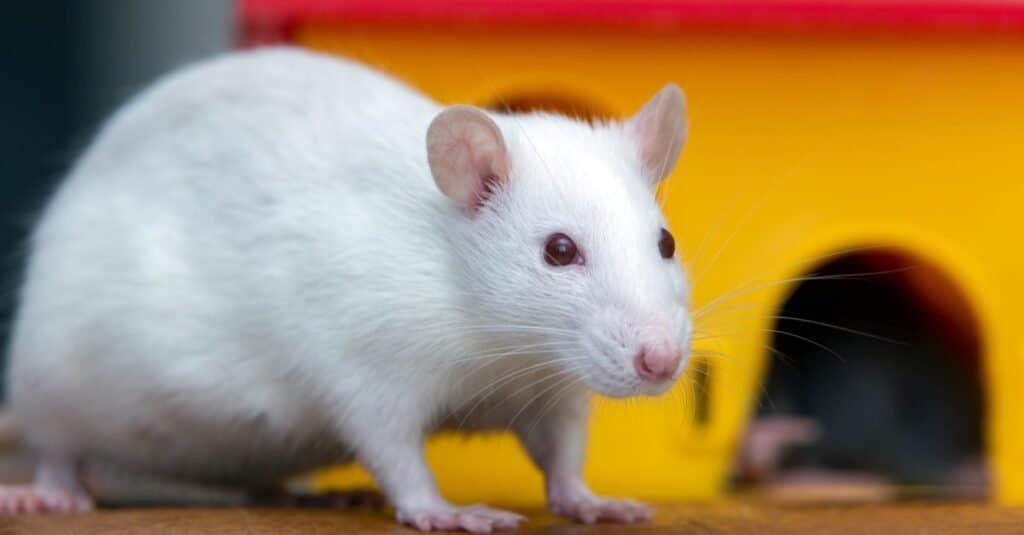
Rats have excellent nocturnal vision and can move their eyes independently (motion parallax) to take snapshots of their environments.
©iStock.com/Bilanol
Rats do not have the sharpest vision despite being nocturnal, but they have other visual abilities to see their surroundings. One key advantage of rats is their ability to discern specific colors because of two classes of cones in the back of their retina. These cells allow them to see blue ultraviolet waves and shades of green. They, however, cannot see reds at all.
Another unique characteristic of rat vision is their field of view. Compared to humans and many other mammals, rats have an almost 180-degree field of vision, giving them superior awareness of their surroundings. This high degree of situational awareness means that rats are excellent at spotting even the tiniest movements, making them extraordinarily agile and alert in even the most chaotic environments.
Yet another fascinating aspect of rat vision is their ability to use each eye independently. This ability allows them to develop mental “snapshots” of specific parts of their environment – a trait known as motion parallax. Such capabilities help them navigate even the darkest nights quickly and efficiently, making them experts at surviving in their habitats.
Do Rats have a Good Sense of Hearing?
Rats are well known for their remarkable sense of hearing. Their hearing range, which extends from 250 hertz to 8 kilohertz, is much higher than that of humans. This excellent advantage ensures they hear a broader range of sounds than people. Additionally, their middle ear mucosa and ossicles are structured similarly to people’s. This feature suggests that rats have similar cochlear functions to us.
Finally, the central auditory system of rats is also remarkably similar to that of humans in terms of anatomical and physiological features. Consequently, rats benefit significantly from their keen sense of hearing due to their nocturnal lifestyle. They can use this ability to navigate and forage at night without being detected by predators. Ultimately, given its impressive hearing abilities, it is clear that the rat’s unique hearing system is crucial in enabling this animal to thrive in dark surroundings.
Rats are Perfectly Adapted to Nocturnal Living
Rats are truly remarkable creatures, perfectly adapted to nocturnal living. Their keen senses allow them to navigate the dark and thrive during their nighttime explorations. Their finely honed hearing enables them to detect even the faintest sounds, helping them find food and avoid potential predators. And with their fantastic smell and broad scope of vision, rats can quickly navigate complex environments and easily find their way around their natural habitats.
If you’re looking for a pet or simply curious about these fascinating animals, rats are well worth getting to know. Whether you’re raising them as pets or studying them for research, these clever creatures are sure to impress. So why not explore their world a little deeper and see what these remarkable creatures can offer? You never know what you might learn.
Nocturnal vs. Diurnal: What’s The Difference?
Navigate to Nocturnal vs. Diurnal: What’s The Difference? for further information about the nocturnal and diurnal phenomenon in various living creatures.
Up Next
The photo featured at the top of this post is © Ukki Studio/Shutterstock.com
Sources
- National Library of Medicine, Available here: https://www.ncbi.nlm.nih.gov/pmc/articles/PMC2617706/
- Nature, Available here: https://www.nature.com/articles/srep35662
- Journals, Available here: https://journals.biologists.com/jeb/article/204/14/2439/32957/Cone-based-vision-of-rats-for-ultraviolet-and
- National Library of Medicine, Available here: https://www.ncbi.nlm.nih.gov/pmc/articles/PMC7480078/
- Science Direct, Available here: https://www.sciencedirect.com/science/article/abs/pii/S0168159108000646
Thank you for reading! Have some feedback for us? Contact the AZ Animals editorial team.



